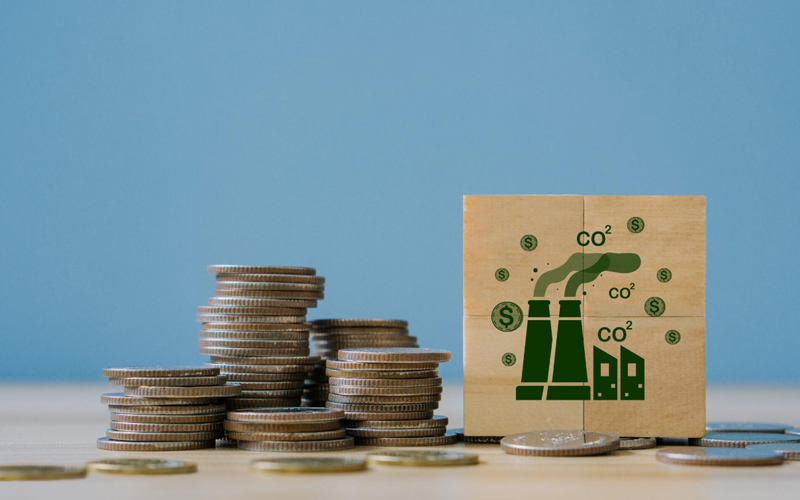Procurement has evolved from a tactical function to a strategic driver of business success. In this new paradigm, utilising AI and automation in supplier management plays a central role, transforming procurement processes and creating long-term competitive advantages. As organisations increasingly rely on complex global supply chains, the need for more efficient, accurate, and proactive supplier management becomes critical.
The current state of supplier management in procurement
Supplier management traditionally involves various tasks such as supplier identification, selection, onboarding, information (master data) management, contract management, performance evaluation, and ongoing relationship management. These processes have historically been manual, relying on spreadsheets, email exchanges, and face-to-face meetings and some part of supplier life cycle management has been done over legacy systems. As businesses scale and operate globally, this approach becomes inefficient, error-prone, and unsustainable.
Key challenges in traditional supplier management include:
- Inconsistent supplier master data: Multiple formats, systems, and data entry errors hinder accurate supplier insights.
- Inefficient Process: Manual efforts, long TATs, and errors make supplier management inefficient, as procurement teams focus on repetitive tasks, hindering strategic activities and causing sub-optimal outcomes and decision delays.
- Poor supplier performance and increased supplier risk: The inability to identify and select good relevant suppliers negatively impacts the supplier base performance from the quality of supplied goods/services to timely delivery. The absence of systems for holistic risk management further aggravates the overall supplier performance.
- Limited visibility: Without integrated systems, tracking supplier performance, compliance, and risk in real-time is challenging. AI and automation promise to address these issues by streamlining processes, enhancing supplier relationships, and driving innovation in procurement.
AI-powered automated supplier management systems
The use of AI and automation in supplier management is not just about efficiency; it is about unlocking the full potential of procurement teams and building resilient, competitive supply chains. AI-powered automated supplier management can make processes more effective and efficient by:
- Supplier discovery
- Supplier selection
- Automated negotiations: Autonomous procurement platforms have the functionality of intelligent negotiations and e-auctions which help in obtaining the best possible buy prices.
- Supplier selection recommendation: Prescriptive analytics tools use optimisation algorithms to recommend the best supplier by evaluating quoted cost, payment terms, delivery lead times, and warranty period, ensuring optimal supplier selection.
- Supplier onboarding
- Supplier master data management
- Centralised supplier database: Supplier data is consolidated into a single, central system, ensuring that all information is standardised and up-to-date across the enterprise using AI-powered supplier management platforms. This eliminates the inconsistencies often found in manual systems, where data is siloed in different departments or software tools.
- Data management: AI algorithms automate data cleansing, avoid duplicate entries and delete non-active supplier details as per company policy.
- Supplier risk management
- Supplier risk prediction and mitigation strategies: AI-powered supplier risk management modules use machine learning to predict risks by evaluating factors like financial health, operational performance, geopolitical and legal issues, cybersecurity, logistics, overreliance, reputation, ESG, and capacity, offering strategies for high-risk suppliers and enabling proactive risk management and low-risk supplier selection.
- Real time risk monitoring: Automation tools can continuously scan external and internal data sources, alerting procurement teams to potential risks related to suppliers, such as bankruptcies, labour disputes, or environmental violations. The risk can be monitored for upstream supplier tiers as well.
- Scenario planning: With automated data analytics, procurement professionals can run simulations and scenarios to assess how various risk factors could impact the supply chain, helping them develop contingency plans and avoid disruptions.
- Supplier performance management
- Supplier scorecards: AI-powered automated supplier management platforms provide procurement teams with detailed supplier scorecards, based on factors such as delivery performance, quality, pricing, and risk compliance. This makes it easier to identify high-performing suppliers and those who may need improvement.
- Performance benchmarking: Automated systems can track the performance of suppliers against benchmarks, allowing procurement professionals to compare multiple suppliers based on performance metrics, helping them make more strategic sourcing decisions.
- Supplier relationship management:
- Supplier collaboration:
- Collaborative functionality: AI-powered supplier management platforms offer collaborative tools that allow suppliers and procurement teams to work together in real time, ensuring transparency in order processing, issue resolution, and contract negotiations.
- CPFR: The platforms enable Collaborative Planning, Forecasting and Replenishment (CPFR) to meet the end customer’s demand at the lowest possible cost.
Supplier directories, portals and supplier discovery platforms help procurement teams to identify relevant good suppliers swiftly. This helps to have a good pool of suppliers for RFXs.
Self-service gen AI streamlines onboarding by automating supplier vetting, approval, and registration, allowing suppliers to self-register and update information via integrated portals, thus reducing manual efforts and communication delays.
Supplier management platforms can classify suppliers into distinct categories of strategic, critical and transactional suppliers, and can recommend relationship strategies based on supplier category.
Future of procurement
Employing AI-powered automated supplier management is set to have a profound impact on the future of procurement. As companies strive to build more resilient, agile, and efficient supply chains, automation will play a key role in ensuring success.
- Elevating procurement’s strategic role: In the future, procurement will be less about transactional tasks and more about strategic contributions to the business. Automation allows procurement professionals to shift their focus from managing daily supplier issues to developing long-term sourcing strategies, driving cost savings, and fostering innovation with suppliers.
- Agility and flexibility in supply chains: The COVID-19 pandemic emphasised the necessity for adaptable supply chains, with AI and automation empowering procurement teams to swiftly respond to market fluctuations and disruptions.
- Rapid supplier switching: Automation allows for faster onboarding and switching of suppliers when disruptions occur, ensuring supply continuity.
- Dynamic supplier networks: Automated systems enable businesses to maintain dynamic supplier networks, where suppliers can be added, removed, or prioritised based on changing needs and risks.
- Risk reduction: Real-time monitoring and predictive analytics will help mitigate supplier risks before they impact the business.
- Sustainability and ethical sourcing: Sustainability is becoming a top priority for organisations, and AI and automation can help procurement teams ensure that suppliers meet sustainability and ethical sourcing standards.
- Automated compliance checks: AI-powered automated supplier management systems can continuously check for compliance with environmental, social, and governance (ESG) standards, ensuring that suppliers meet the organisation’s sustainability goals. Tracking and reporting automation can track suppliers’ carbon footprints, labour practices, and ethical sourcing certifications, providing procurement teams with real-time data to report on sustainability initiatives.
- Cost optimisation and supplier innovation: In the future, automation will be essential for driving cost savings and fostering supplier-led innovation. By automating negotiations, contract management, and performance reviews, procurement can optimise costs and extract greater value from supplier relationships.
- Better supplier relationships: Automation will foster collaboration and will strengthen long-term supplier partnerships.
The future of procurement is inherently tied to the usage of AI-powered automated supplier management. As businesses operate in an increasingly complex and competitive environment, the ability to manage suppliers efficiently and strategically will determine success. Automation provides procurement teams with tools to elevate their role, streamline operations, and build resilient, agile, and sustainable supply chains. Organisations that embrace automation in supplier management will gain a critical advantage in the marketplace, positioning themselves for long-term growth and innovation.







